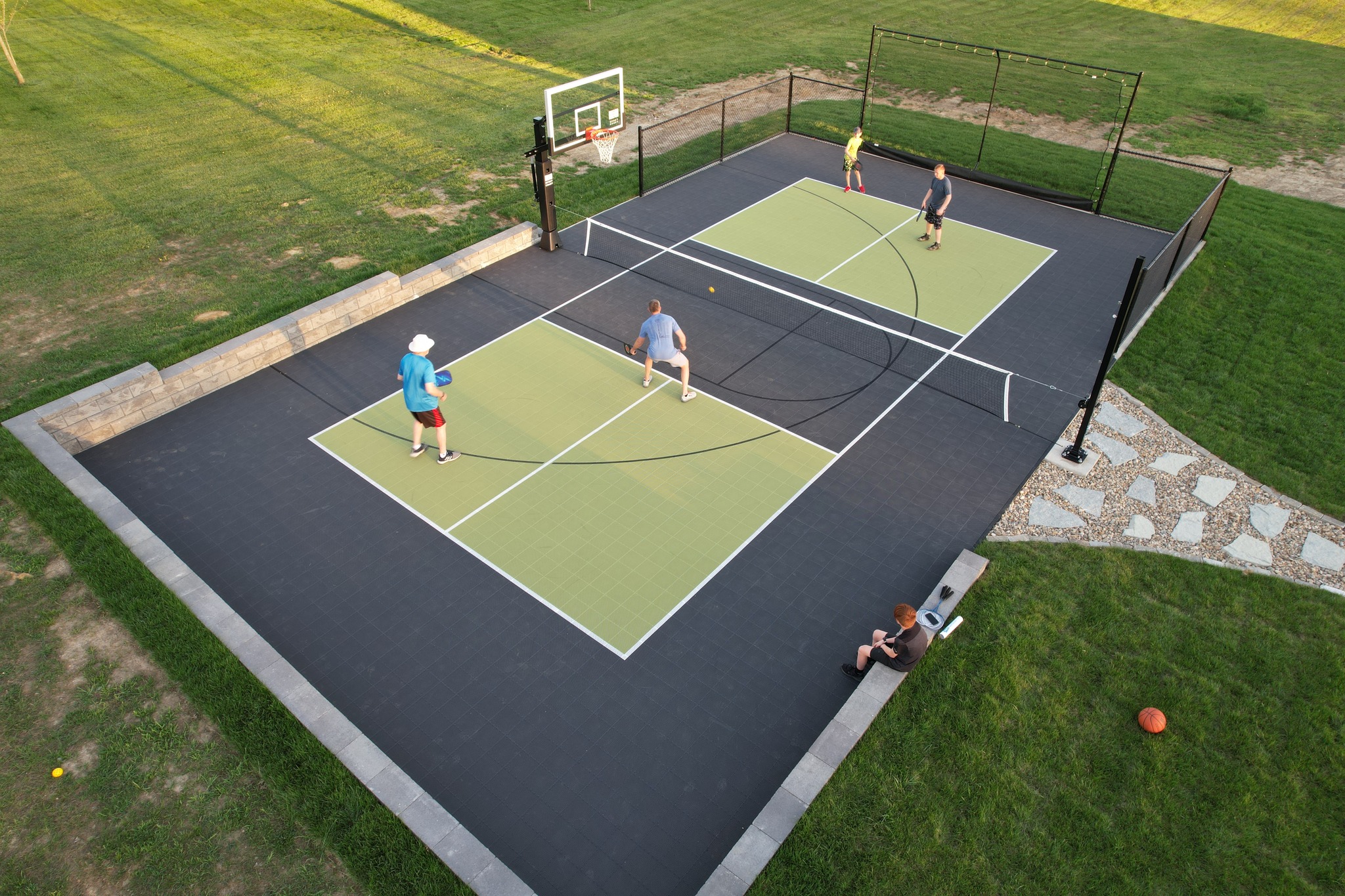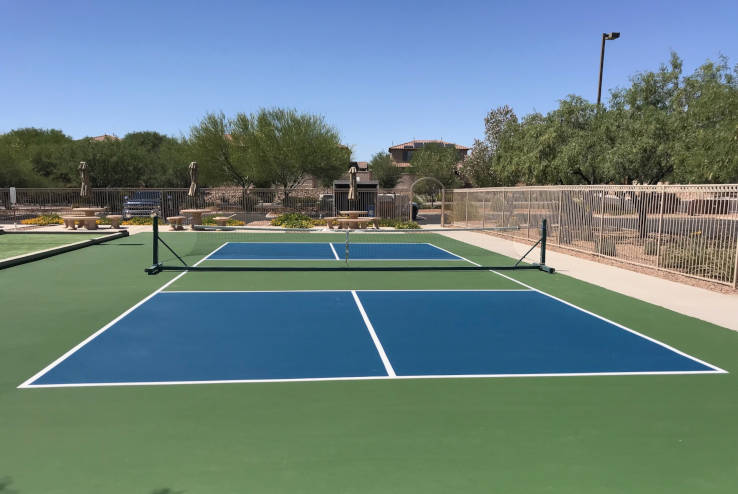How Local Laws Influence Your Pickleball Court Construction Strategies
How Local Laws Influence Your Pickleball Court Construction Strategies
Blog Article
Increase Local Engagement With Community-Driven Pickleball Court Projects
The appearance of community-driven pickleball court tasks offers an one-of-a-kind chance to promote local interaction and enhance community connections. The genuine inquiry remains: how can these grassroots efforts be purposefully implemented to make certain sustainability and inclusivity in diverse communities?
Relevance of Neighborhood Engagement
Neighborhood engagement is an important component in the successful development of pickleball court projects, as it cultivates a feeling of ownership and collective responsibility among residents. When neighborhood members are actively included in the preparation and execution stages, they are much more likely to promote for the project's long-term success. Engaging stakeholders such as local players, family members, and leisure groups makes sure that the facilities fulfill the varied needs and preferences of the area.
Additionally, area engagement cultivates an encouraging environment where homeowners feel equipped to add their sources and ideas. Pickleball court construction. This joint strategy can cause ingenious solutions that enhance the layout and capability of the courts, making them much more attractive to a larger target market. In addition, including citizens in decision-making processes can reinforce social connections, advertising inclusivity and unity within the area
The presence of neighborhood support for a pickleball task can additionally play a critical role in securing funding and authorization from local authorities. By demonstrating a shared dedication to recreational advancement, areas can successfully advocate for resources and plan adjustments that prefer the facility of pickleball courts, eventually improving the regional culture and leisure landscape.
Steps to Launch a Job
Initiating a pickleball court job requires a methodical technique that constructs on the foundation of community involvement developed in previous discussions. The initial step is to assemble a job committee consisting of neighborhood stakeholders, lovers, and agents from pertinent companies. This diverse group guarantees that several point of views are taken into consideration.
Following, perform a demands assessment within the area. Studies, focus teams, and public meetings can be effective in evaluating interest and celebration input on prospective court locations, preferred features, and organizing preferences. Following this, create a project strategy outlining goals, timelines, and responsibilities.
As soon as the plan is in location, involve with neighborhood authorities to recognize zoning policies and any kind of needed licenses. Interacting transparently with the area throughout this procedure is important, as it cultivates trust and urges further engagement.
Additionally, organizing community occasions can assist maintain momentum and interest. These occasions can act as systems for more conversation and aid to strengthen area ties. Document every step taken and maintain comprehensive documents, as this will certainly be helpful for future stages of the job, consisting of funding and source acquisition.
Financing and Resources Available
Safeguarding financing and resources for a pickleball court job is typically a critical step that can establish the job's expediency and success. Numerous opportunities exist for acquiring financial backing, ranging from public funding to personal sponsorships. Local government grants, typically targeted at advertising neighborhood health and recreation, can offer considerable sponsorship for such efforts.
Along with government sources, nonprofit companies and foundations often provide grants especially for sports and area advancement projects. Engaging regional companies as sponsors can likewise be a productive method; many companies aspire to purchase area efforts that improve their corporate social responsibility account.
Crowdfunding systems have actually become a feasible option for grassroots fundraising, allowing area members to contribute straight to the project. This technique not only elevates funds yet also fosters a feeling of ownership among participants.
Layout and Planning Factors To Consider
Efficient design and preparation are basic elements of any type of successful pickleball court job complying with the acquisition of financing and resources. A comprehensive evaluation of the suggested area is crucial; this consists of analyzing access, closeness to existing area services, and the capacity for exposure and engagement.
The design of the court must adhere to official dimension specifications while taking into consideration the surrounding setting. Integrating attributes such as seats, shade structures, and ideal lighting can dramatically enhance player experience and spectator enjoyment. Materials selected for the court surface need to focus Look At This on resilience and security, with choices like acrylic or asphalt offering optimal efficiency.
Involving community participants in the style process cultivates a sense of possession and guarantees that the center satisfies regional needs - Pickleball court construction. This can be achieved via public assessments and surveys, allowing stakeholders to share their choices and problems
Sustainability should additionally be a concern; incorporating eco-friendly materials and practices can add to long-term feasibility. Producing a maintenance plan to make certain the court stays in exceptional problem will certainly sustain recurring community engagement and engagement in pickleball tasks.

Success Stories and Instance Researches
Highlighting the transformative influence of community-driven initiatives, a number of success tales highlight exactly how collaborative efforts have resulted in the development of dynamic pickleball courts throughout different regions. One significant example is the campaign in a village in Florida, where citizens banded with each other to convert an underutilized tennis court right into a specialized pickleball facility. Through fundraising events and collaborations with regional services, the area increased adequate funds to read this mount new internet, resurfacing, and lines, inevitably promoting a vibrant center for local players.
In a similar way, in a suburb of The golden state, a grassroots motion emerged to create pickleball courts in a neighborhood park. The task not only involved volunteers for building yet likewise consisted of workshops to engage area participants in the sporting activity. Therefore, the courts ended up being a centerpiece for social communication and physical fitness, bring in gamers of any ages.
These study exemplify exactly how community-driven projects can enhance neighborhood engagement, promote physical task, and reinforce social bonds. By leveraging cumulative resources and excitement, neighborhoods can efficiently produce and sustain pickleball centers that offer varied populaces and promote a feeling of belonging.

Verdict
Finally, community-driven pickleball court jobs act as important instruments for improving neighborhood involvement and cultivating a sense of belonging among residents. By prioritizing stakeholder involvement throughout the planning and application phases, recommended you read these initiatives can properly address diverse community demands. In addition, leveraging available resources and analyzing successful study can provide beneficial insights for future jobs. Ultimately, such efforts contribute to the makeover of public areas into vibrant facilities of physical fitness and social communication, reinforcing neighborhood connections.
The emergence of community-driven pickleball court tasks provides an unique possibility to promote regional involvement and enhance neighborhood connections.Community interaction is an important element in the successful development of pickleball court projects, as it cultivates a feeling of possession and collective duty among homeowners. When neighborhood participants are actively included in the planning and application phases, they are a lot more most likely to advocate for the project's long-term success.Initiating a pickleball court project needs a methodical strategy that develops on the structure of area interaction established in previous discussions. The project not just engaged volunteers for building and construction but additionally consisted of workshops to involve neighborhood participants in the sporting activity.
Report this page